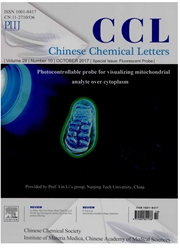

 中文摘要:
中文摘要:
在 silico,潜在的合成目标的预言是为新沸石的带功能的发现的前提。百万假想 zeolitic 结构经由各种各样的计算方法被预言了,但是他们中的大多数在常规合成条件下面是试验性地无法接近的。外面屏蔽难实施的结构为有需要的功能的合成目标的选择是关键的。本地 interatomic 距离(盖) 标准是所有存在沸石框架类型严格地服从的一套结构规则。用这些标准,许多难实施的假想结构被检测了。然而,计算他们的盖,没有对称限制,所有假想结构需要充分被优化。当评估很多假想结构时,如此的计算可以由于自由的 forbiddingly 高的度变得太计算地昂贵。这里,我们在作为新结构评估标准与对称限制并且用他们优化的结构之中建议精明的盖,即, LID sym 标准,外面屏蔽难实施的假想结构。我们发现 LID sym 标准能检测难实施的结构同样多还象原来的非对称的盖标准做一样,在起始的几何学优化阶段要求至少一数量级更少计算。
 英文摘要:
英文摘要:
In silico prediction of potential synthetic targets is the prerequisite for function-led discovery of new zeolites. Millions of hypothetical zeolitic structures have been predicted via various computational methods, but most of them are experimentally inaccessible under conventional synthetic conditions.Screening out unfeasible structures is crucial for the selection of synthetic targets with desired functions.The local interatomic distance(LID) criteria are a set of structure rules strictly obeyed by all existing zeolite framework types. Using these criteria, many unfeasible hypothetical structures have been detected. However, to calculate their LIDs, all hypothetical structures need to be fully optimized without symmetry constraints. When evaluating a large number of hypothetical structures, such calculations may become too computationally expensive due to the forbiddingly high degree of freedom. Here, we propose calculating LIDs among structures optimized with symmetry constraints and using them as new structure evaluation criteria, i.e., the LIDsymcriteria, to screen out unfeasible hypothetical structures. We find that the LIDsymcriteria can detect unfeasible structures as many as the original non-symmetric LID criteria do, yet require at least one order of magnitude less computation at the initial geometry optimization stage.
 同期刊论文项目
同期刊论文项目
 同项目期刊论文
同项目期刊论文
 期刊信息
期刊信息
